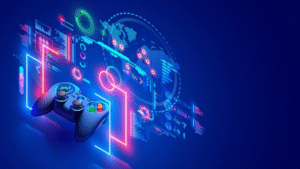Force & Torque Sensor Market: Enabling Precision in Smart Manufacturing and Robotics
Force and torque sensors have become indispensable in modern industrial automation, robotics, and precision measurement systems. These sensors measure the magnitude of force and twisting moments (torque), enabling machines to replicate human sensitivity and ensure safe, accurate interactions in dynamic environments. As manufacturing continues its evolution toward Industry 4.0, the force and torque sensor market is gaining strong momentum globally.
Market Overview
Force and torque sensors are used to monitor, control, and analyze mechanical forces in real time. Their applications range from robot arms and CNC machines to biomechanics, automotive testing, and aerospace engineering. The global demand for these sensors is rising due to the need for quality control, safety assurance, and automated precision across multiple sectors.
Key Market Drivers
-
Adoption of Collaborative Robots (Cobots): Force/torque sensors are essential for safe human-robot collaboration, enabling robots to detect and respond to physical contact.
-
Industry 4.0 & Smart Manufacturing: Advanced sensors help monitor performance and optimize production processes.
-
Automotive & Aerospace Testing: Sensors ensure structural integrity and simulate real-world stress in component testing.
-
Medical & Biomechanics Applications: Used in surgical robots, prosthetics, and rehabilitation systems for controlled force feedback.
Application Areas
-
Robotics & Automation: Enables delicate handling, object manipulation, and adaptive control in industrial and service robots.
-
Test & Measurement: Precision validation of components under mechanical stress in R&D and quality control labs.
-
Assembly & Manufacturing Lines: Torque sensors prevent over-tightening or under-tightening of bolts and fasteners.
-
Medical Devices: Critical for haptic feedback in robotic surgery and physical therapy systems.
Technology Trends
-
Miniaturization: Compact sensors for integration into lightweight robots and small medical tools.
-
Wireless & IoT-Enabled Sensors: Real-time data monitoring and cloud-based analytics for predictive maintenance.
-
Multi-Axis Measurement: Sensors capable of detecting force and torque in multiple directions (X, Y, Z) for complex tasks.
-
High Sensitivity & Resolution: Meeting the precision demands of fields like aerospace and micromanufacturing.
Regional Insights
-
Asia-Pacific: Dominates global demand with strong robotics and automotive manufacturing bases in China, Japan, and South Korea.
-
Europe: Focus on advanced automation, Industry 4.0, and surgical robotics in Germany, France, and the UK.
-
North America: High adoption in aerospace, defense, and research-driven sectors like life sciences and healthcare.
Market Challenges
-
High Cost of Precision Sensors: Limits adoption among small-scale manufacturers.
-
Calibration Complexity: Maintaining long-term sensor accuracy in high-load or variable environments.
-
Integration & Compatibility Issues: With existing machinery and control systems.





